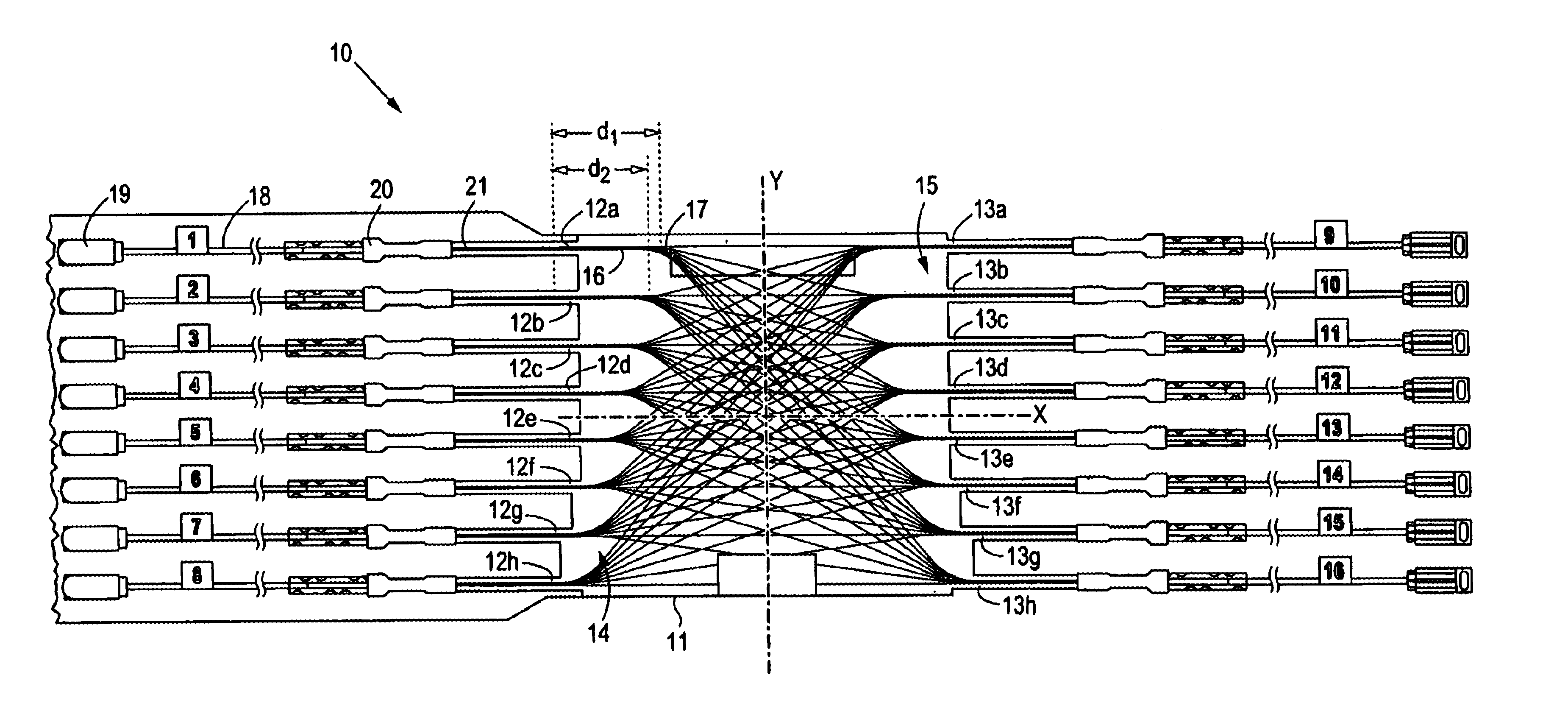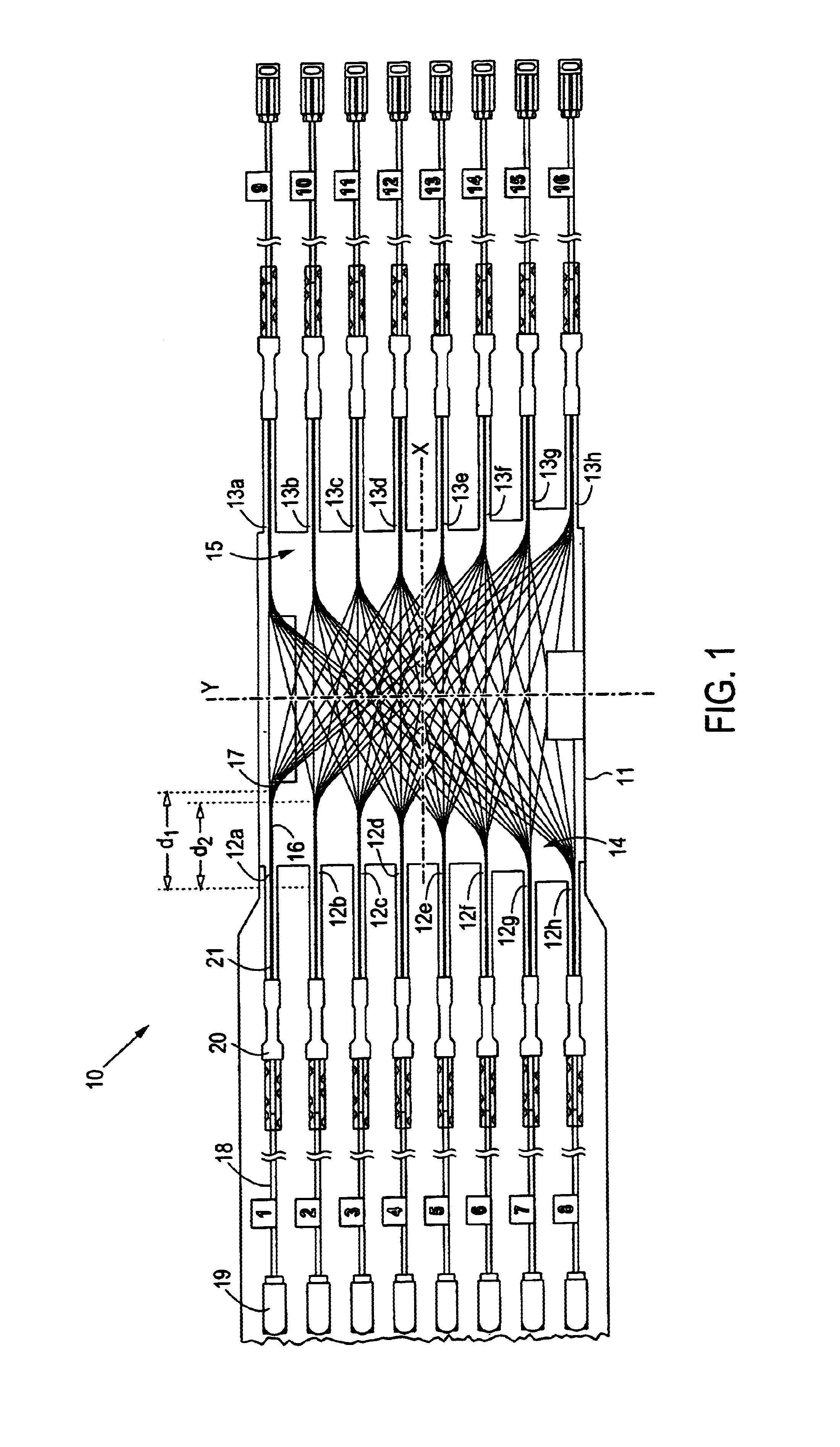Optical fiber circuit
a fiber optic circuit and optical fiber technology, applied in the field of optical circuits, can solve the problems of significant differences in the transmission time of port-to-port between the various ports, increase in the fiber layout, and general inacceptability, so as to reduce the incidence of fiber stacking, avoid fiber stacking, and minimize skew
- Summary
- Abstract
- Description
- Claims
- Application Information
AI Technical Summary
Benefits of technology
Problems solved by technology
Method used
Image
Examples
Embodiment Construction
Referring to FIG. 1, a preferred embodiment of the optical circuit 10 of present intention is shown. The optical circuit comprises a body 11 having an x and y axis and two sides 14, 15 substantially parallel to the y-axis and separated along the x-axis. A plurality of first ports 12a-h is disposed along one side 14, and a plurality of second ports 13a-h is disposed along the other side 15. Each port comprises a number of substantially paralleled fibers. These parallel fibers are indicated as 16 for port 12a.
The fibers of the ports are arranged to interconnect the first and second ports along straight, hence, diagonal lines. In a preferred embodiment, the fibers of a given second port, for example port 13a, comprise a fiber from each of the first ports 12a-h. The fibers interconnecting the first and second ports are arranged asymmetrically about at least one of the x or y axes. In the embodiment shown in FIG. 1, the fibers are asymmetrical about the x-axis. It should be understood, h...
PUM
 Login to View More
Login to View More Abstract
Description
Claims
Application Information
 Login to View More
Login to View More - R&D
- Intellectual Property
- Life Sciences
- Materials
- Tech Scout
- Unparalleled Data Quality
- Higher Quality Content
- 60% Fewer Hallucinations
Browse by: Latest US Patents, China's latest patents, Technical Efficacy Thesaurus, Application Domain, Technology Topic, Popular Technical Reports.
© 2025 PatSnap. All rights reserved.Legal|Privacy policy|Modern Slavery Act Transparency Statement|Sitemap|About US| Contact US: help@patsnap.com


